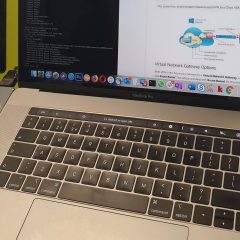DrayTek Wireless Mesh
DrayTek Wireless Mesh KB ID 0001914 Problem I had a couple of ‘sketchy’ wireless spots in my home, so I wanted to setup a DrayTek Wireless Mesh. I had purchased a VigorAP1060C access point to do all the wireless heavy lifting at home, and say it could act as a MESH ROOT, but it was quite expensive, so I wanted something a little or affordable. A quick search told me the models I could use with it as MESH NODES. And the...
Getting MORE! Free Airport / Hotel Free Wi-Fi
KB ID 0001278 Problem I was at the Airport the other day, and was pleased to find they had free Wi-Fi. So I opened my Email and started doing some work. The problem was, it was only free for 45 minutes and, (as is usually the case) I was going to be in the airport for a couple of hours. Not only that, you are expected to sign up for airport related spam and marketing materials? So 45 minutes later, I was dumped off the WiFi, and was...
Mac OSX – GNS3 Connecting To the Internet
KB ID 0001170 Problem I have a love hate relationship with GNS3, I appreciate it’s brilliant, (when it works). I also appreciate that it’s free, and people put a lot of effort into its development for very little reward. But when I try to do simple things, like connect my projects/labs to the internet and it’s massively overcomplicated I get pretty exasperated. With Windows this is easy, (I’ve probably blogged...
XBMC ‘Gotham’ – Network Manager is Incompatible
KB ID 0001014 Problem I’ve just replaced my XBMCbuntu media PC (an Acer Revo 3700) with a newer machine, and I was rebuilding the old one for my neighbour. I’m not sure if he has a wired connection where his TV is so I wanted to use Network Manager to setup the wireless connection. But when I tried to add it, this happened; XBMC 13.0 (Compiled May 4 2014) Solution 1. To get round this you need to install the add-on from a...
Playstation 3 – Error ‘A DLNA protocol error (2104) has occurred’ When streaming from Windows Media Player
KB ID 0000696 Problem My Windows 7 Media Center can’t stream to my PS3, but the Windows Media Player that’s built into the same PC can, (well it should be able to!) However when I tried, this is what the Playstation told me. Media Server Error: A DNLA protocol error (2104) has occurred. Solution Note: Your local firewall on the Windows 7 machine can also cause this problem. I have a decent firewall at home, so I disabled...



